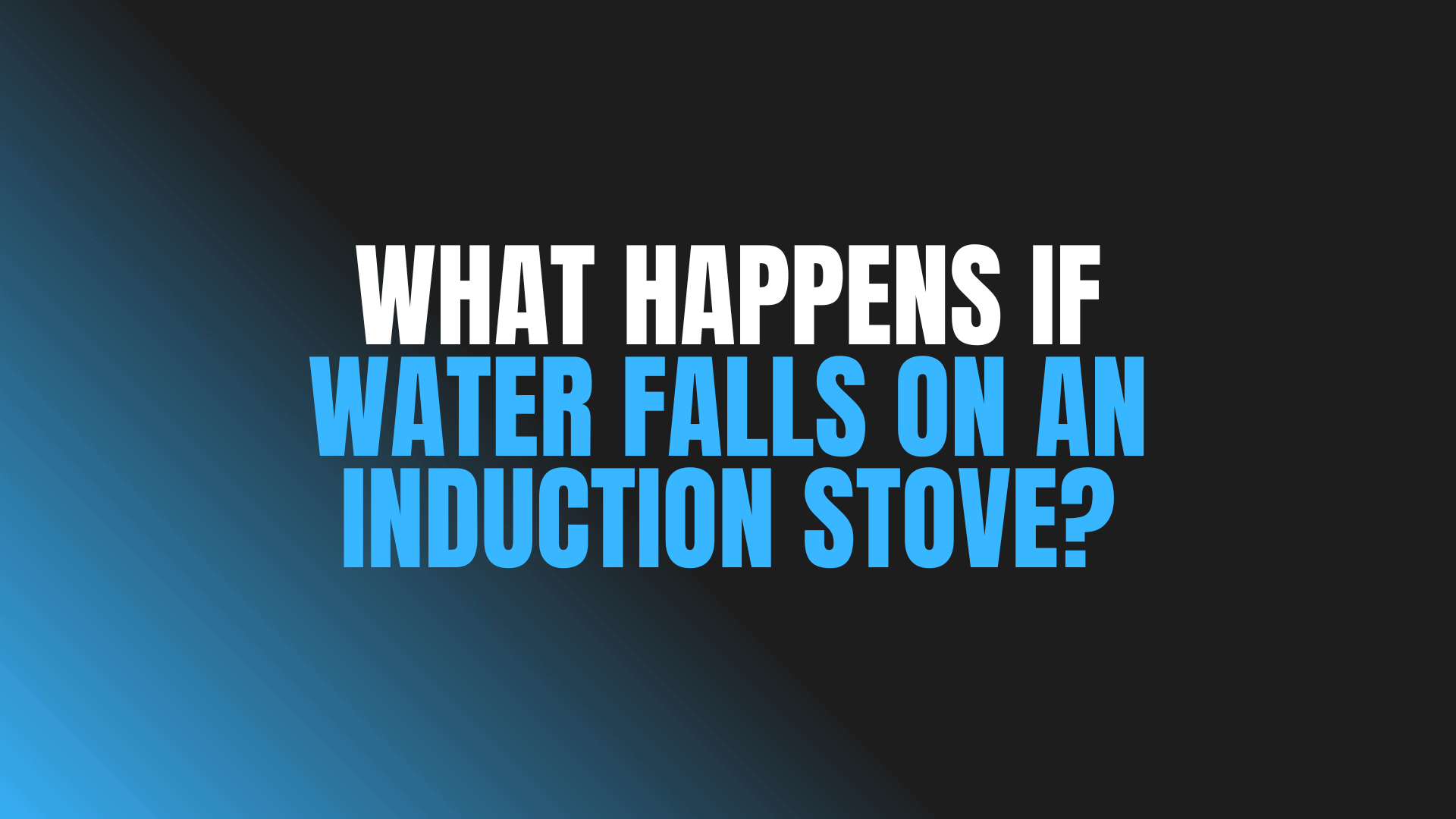
Question: What Happens if Water Falls on an Induction Stove?
Answer: Nothing will happen if water falls on an induction stove. Induction cooktops heat cookware directly via a magnetic field. The water may evaporate slowly from residual heat, or simply sit there.
Induction Stovetops and Water Spills
Induction cooking offers speed, safety, and energy efficiency. Home cooks and professional chefs appreciate its precise temperature control. Many new homeowners or apartment dwellers encounter induction stoves for the first time and have questions about their use, particularly regarding cleaning and safety. One common question arises: “What happens if water falls on an induction stove?” This article addresses this specific concern, explaining the interaction between water and induction technology. We’ll explore the safety features, cleaning procedures, and the science behind induction cooking, providing a clear understanding of what to expect if water spills on your induction cooktop.
This knowledge will empower you to confidently use your induction stove, maintain it effectively, and address any concerns about water spills. You will learn practical tips for cleaning up spills and maintaining the optimal performance of your induction cooktop.
Understanding Induction Cooking Technology
Induction cooking uses electromagnetism to heat cookware directly. A copper coil located beneath the cooktop’s smooth surface generates a magnetic field. When you place a ferromagnetic pot or pan on the cooktop, this magnetic field induces eddy currents in the cookware. These eddy currents generate heat, causing the pot or pan (and its contents) to heat up rapidly.
The cooktop surface itself does not generate heat directly. It only becomes warm from contact with the hot cookware. This characteristic contributes to induction cooking’s safety and energy efficiency. Since heat transfer occurs primarily within the cookware, energy loss is minimal.
The cooktop automatically stops generating the magnetic field when you remove the cookware. This rapid response system prevents wasted energy and reduces the risk of burns. The focused nature of induction cooking ensures quick heating and precise temperature control, making it a popular choice for modern kitchens.
Click the link to learn more about Blue Kitchen Refacing
Related Article: What Are the Disadvantages of an Induction Oven?
Related Article: Can You Use Regular Pans in an Induction Oven?
Cleaning Water Spills on Your Induction Stove
Cleaning up water spills on your induction cooktop is a straightforward process. First, ensure the cooktop is cool to the touch. Then, simply wipe up the spill with a damp cloth or sponge. For stubborn residues, a specialized induction cooktop cleaner can help remove the mark. Avoid abrasive cleaners or scouring pads, as these can scratch the surface of your cooktop.
Regular cleaning will maintain your cooktop’s appearance and performance. A simple wipe-down after each use is usually sufficient. For a deeper clean, you can use a mixture of water and vinegar. Apply the solution, let it sit for a few minutes, then wipe clean with a soft cloth. This practice will help to prevent build-up and keep your cooktop looking its best.
Preventing spills altogether is always easier than cleaning them up. Use appropriately sized cookware and avoid overfilling pots and pans. Careful cooking habits contribute to a cleaner kitchen and a longer-lasting cooktop.
Safety Features of Induction Stoves and Water
Induction cooktops offer several safety advantages, particularly regarding water spills. The absence of an open flame eliminates the risk of igniting flammable liquids. The cooktop surface itself doesn’t get as hot as traditional electric or gas burners, reducing the severity of potential burns.
Many induction cooktops also incorporate automatic shut-off features. These features detect the absence of cookware or very small amounts of material and deactivate the heating element. This function prevents overheating and conserves energy. Some models include a child lock feature to prevent accidental activation.
The precise control offered by induction cooking also contributes to safety. You can adjust the heat instantly, minimizing the risk of boiling over or scorching. This level of control makes induction cooking a safer option, especially for households with children or pets.
Addressing Common Concerns about Induction and Water
Some people worry that water near the control panel might damage the electronics. Most induction cooktops have sealed control panels designed to resist moisture. While a small amount of water is unlikely to cause issues, it’s always best to wipe up spills promptly and avoid excessive moisture around the controls.
Another concern is the potential for water to short-circuit the internal components of the cooktop. Again, the design of induction cooktops generally protects against this. However, avoid submerging the cooktop in water or pouring large amounts of water directly onto the electronics. If a significant amount of water enters the internal components, contact a qualified technician for assistance.
With proper care and maintenance, your induction cooktop will provide years of reliable service. Understanding its safety features and how it interacts with water can alleviate any anxieties and enable you to fully enjoy the benefits of this innovative cooking technology.
Enhancing Your Induction Cooking Experience
To optimize your induction cooking experience, choose induction-compatible cookware. These pots and pans contain ferromagnetic materials, allowing efficient heat transfer. You can test your existing cookware with a magnet; if a magnet sticks, it should work on an induction cooktop.
Experiment with the precise temperature control offered by induction cooking. Learn how quickly your cooktop responds to changes in heat settings. This control enables delicate cooking techniques and consistent results. Explore new recipes and expand your culinary repertoire with the power and precision of induction.
By understanding how your induction cooktop works and following the recommended care instructions, you can ensure its longevity and enjoy its many advantages for years to come. Embrace the efficiency, safety, and convenience of this modern cooking method. With a little knowledge and practice, you can master induction cooking and elevate your culinary creations.
Conclusion
Water spills on an induction cooktop are generally not a cause for alarm. The technology itself prevents the water from heating directly, minimizing the risk of burns or damage. While it is best practice to wipe up spills promptly to prevent residue build-up, the interaction between water and the induction surface poses no immediate threat.
Induction cooking offers many benefits, including safety, efficiency, and precise temperature control. By understanding how this technology works and following the recommended care and cleaning instructions, you can confidently enjoy the advantages of induction cooking without worrying about the occasional water spill. Embrace the future of cooking with the power and precision of induction technology.

Blue Malue Get in touch with Blue here.
